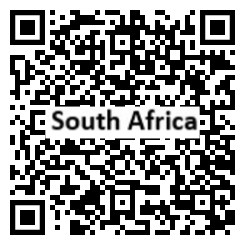Introduction
Background
By about A.D. 500, Bantu speaking groups settled into northeastern South Africa. Dutch traders landed at the southern tip of present-day South Africa in 1652. The British seized the Cape of Good Hope area in 1806. British and Afrikaners (Dutch descendants) ruled jointly from 1910 in the Union of South Africa. The African National Congress (ANC) led the opposition to apartheid. The first multi-racial elections in 1994 followed the end of apartheid.
Geography
Area
total: 1,219,090 sq km
land: 1,214,470 sq km
water: 4,620 sq km
Climate
mostly semiarid; subtropical along east coast; sunny days, cool nights
Natural resources
gold, chromium, antimony, coal, iron ore, manganese, nickel, phosphates, tin, rare earth elements, uranium, gem diamonds, platinum, copper, vanadium, salt, natural gas
People and Society
Population
58,048,332 (2023 est.)
Ethnic groups
Black African 81.4%, Colored 8.2%, White 7.3%, Indian/Asian 2.7%, other 0.4% (2022 est.)
Languages
isiZulu (official) 25.3%, isiXhosa (official) 14.8%, Afrikaans (official) 12.2%, Sepedi (official) 10.1%, Setswana (official) 9.1%, English (official) 8.1%, Sesotho (official) 7.9%, Xitsonga (official) 3.6%, siSwati (official) 2.8%, Tshivenda (official) 2.5%, isiNdebele (official) 1.6%, other (includes Khoi, Nama, and San languages) 2%; note - data represent language spoken most often at home (2018 est.)
Religions
Christian 85.3%, African traditional 7.8%, Muslim 1.6%, Hindu 1.1%, other 1.3%, none 2.9% (2022 est.)
Population growth rate
1.08% (2023 est.)
Government
Government type
parliamentary republic
Capital
name: Pretoria (administrative capital); Cape Town (legislative capital); Bloemfontein (judicial capital)
Executive branch
chief of state: President Matamela Cyril RAMAPHOSA (since 15 February 2018); Deputy President Paul MASHSATILE (since 7 March 2023); note - the president is both chief of state and head of government; note - Deputy President David MABUZA resigned 1 March 2023
head of government: President Matamela Cyril RAMAPHOSA (since 15 February 2018); Deputy President Paul MASHSATILE (since 7 March 2023)
Legislative branch
description: bicameral Parliament consists of:
National Council of Provinces (90 seats; nine 10-member delegations, each with 6 permanent delegates and 4 special delegates, appointed by each of the 9 provincial legislatures to serve 5-year terms; note - the Council has special powers to protect regional interests, including safeguarding cultural and linguistic traditions among ethnic minorities)
National Assembly (400 seats; half the members directly elected in multi-seat constituencies and half in a single nationwide constituency, both by proportional representation popular vote; members serve 5-year terms)
Economy
Economic overview
upper middle-income South African economy; hard hit by COVID-19; poor utilities management; key rare earth goods exporter; high income inequality; hosts Africa’s largest stock exchange; rising unemployment, especially youth; land rights changes
Real GDP (purchasing power parity)
$790.625 billion (2021 est.)
$753.6 billion (2020 est.)
$804.634 billion (2019 est.)
Real GDP per capita
$13,300 (2021 est.)
$12,800 (2020 est.)
$13,900 (2019 est.)
Agricultural products
sugar cane, maize, milk, potatoes, grapes, poultry, oranges, wheat, soybeans, beef
Industries
mining (world's largest producer of platinum, gold, chromium), automobile assembly, metalworking, machinery, textiles, iron and steel, chemicals, fertilizer, foodstuffs, commercial ship repair
Remittances
0.22% of GDP (2021 est.)
0.24% of GDP (2020 est.)
0.23% of GDP (2019 est.)
Exports
$130.885 billion (2021 est.)
$94.123 billion (2020 est.)
$105.988 billion (2019 est.)
Exports - partners
China 15%, United Kingdom 8%, Germany 7%, United States 6%, India 6% (2019)
Exports - commodities
gold, platinum, cars, iron products, coal, manganese, diamonds (2019)
Imports
$104.806 billion (2021 est.)
$79.022 billion (2020 est.)
$103.92 billion (2019 est.)
Imports - partners
China 18%, Germany 11%, United States 6%, India 5% (2019)
Imports - commodities
crude petroleum, refined petroleum, cars and vehicle parts, gold, broadcasting equipment (2019)
Exchange rates
rand (ZAR) per US dollar -
Exchange rates:
14.779 (2021 est.)
16.459 (2020 est.)
14.448 (2019 est.)
13.234 (2018 est.)
13.324 (2017 est.)
Page last updated: Wednesday, December 06, 2023
